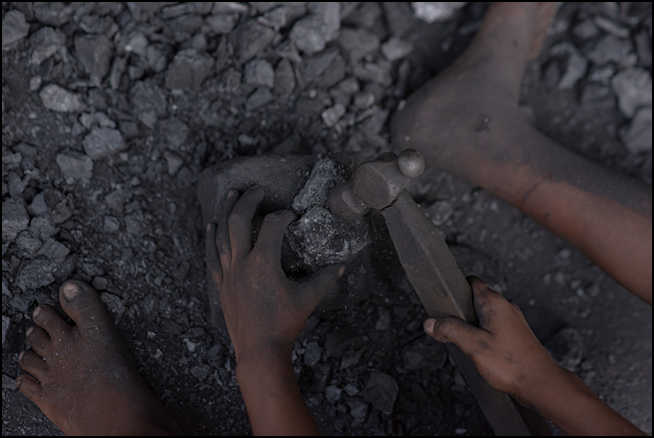Child Labor

Children are amongst the most vulnerable in our world to labor abuse.
Even today, some children work hours far too long, carry loads far too heavy and are denied access to safe working conditions and education.
According to UNICEF, the number of working children has risen to 160 million worldwide – an increase of 8.4 million children in the last four years. At least 9 million additional children are at risk of contracting COVID-19 while working. Globally, nearly 1 in 10 children is at risk, with almost half of working in hazardous conditions for their health and moral development.
Child labor can cause harm – physically, intellectually and emotionally — as the demands of the job can deprive children of education and expose them to risks that include sex/human trafficking and other illegal activities.
When RJC addresses the issue of child labor, we use the definition provided by the UN Convention on the Rights of the Child; a child includes every human being below the age of 18 years, unless under the law applicable to the child, majority is attained earlier.
The UN Convention further defines the issue as work done by children that deprives them of their childhood, potential and dignity, and is harmful to their social, physical and mental development.
Almost one million of those children work in mining or quarrying gold, tin, coal, diamonds, gems, stone and salt. Almost all child miners work in artisanal and small-scale mining (ASM).
Many experts agree that there is very little, if any, mining work that would not be considered ‘hazardous’ under international law. Working underground with dangerous machinery, carrying heavy loads and working with toxic substances, all common in the mining sector, are among these hazardous activities.
Mining, by far, is also the deadliest category of ‘hazardous work’ for children; according to the Organization for Economic Cooperation and Development (OECD)mining results in an average fatality rate of 32 per 100,000 full-time worker equivalents for children aged 5 to 17. Children in some ASM communities are not always adequately safeguarded, and sexual and physical abuses are known risks. Whether it’s sexual exploitation in exchange for hiding a dangerous mining situation, sexual violence in the community or sexual violence in the home, children can be victimized while their parents mine.
So, what can you do to ensure the safety and wellbeing of children within our industry?
Let’s look at how the RJC’s Code of Practices (CoP) can help you.
Under CoP 19.1, RJC-certified members demonstrate that they do not engage in, or support, child labor as defined in ILO Convention 138 and Recommendation 146, which sets the following minimum ages for work:
- A basic minimum working age of 15 years, to enable children to complete compulsory schooling. b. Members operating in countries where compulsory schooling ends earlier than 15 years can start RJC membership while allowing a minimum working age of 14 (subject to applicable law) but shall transition to a minimum working age of 15 by the end of their first certification period.
Under CoP 19.2 – RJC-certified members demonstrate that they do not engage in, or support, forms of child labor as defined in ILO Convention 182 and Recommendation 190, which includes:
- Hazardous child labor, which by its nature or circumstances is likely to jeopardize the health, safety or morals of persons younger than 18 years. Where allowed by applicable law and supported by risk assessment and controls under COP 23 (Health and safety), a minimum age of 16 is allowed on condition that the health, safety and morals of the children concerned are fully protected, and that the children have received adequate specific instruction or vocational training in the relevant branch of activity.
- All forms of child slavery and practices similar to slavery, including debt bondage, the trafficking of children, forced child labor and the use of children in armed conflict.
CoP 19 provides businesses with practical steps a company can take to ensure that they do not participate in child labor.
For instance:
- Make a senior management function, such as human resources, responsible for the child labor policy and procedures, and all remediation of potential and confirmed non-compliances.
- Establish a policy prohibiting the use of child labor and preventing young workers from doing hazardous work. Do this as a stand-alone policy or incorporate it into an existing policy.
- Conduct a risk assessment appropriate to your business circumstances to identify areas where there may be a risk of child labor in your operations or supply chain
Child labor can be a complex topic. There are some communities, especially within ASM, where children have to work. If you are ever faced with a situation like this, it is imperative that you use the guiding principles of the UN Convention on the Rights of the Child to ensure every child’s well-being and safety. Our team at RJC can provide guidance on these difficult topics and situations to help implement strategies and protocols to help protect children throughout your supply chain.
Children in and outside our industry need our help. Our actions to proactively protect children’s rights, help them experience safe and healthy early years that every child should have.
RJC is here to help. Please reach out to us if you have any questions; we are more than happy to assist you at membership@responsiblejewellery.com
Until next time.